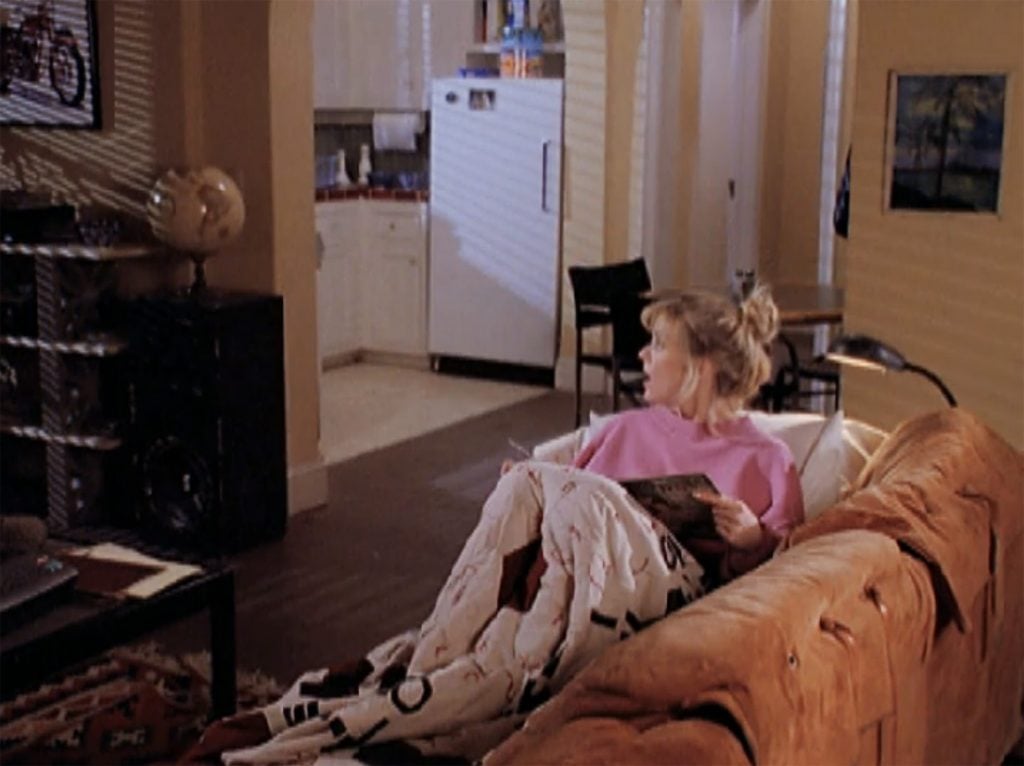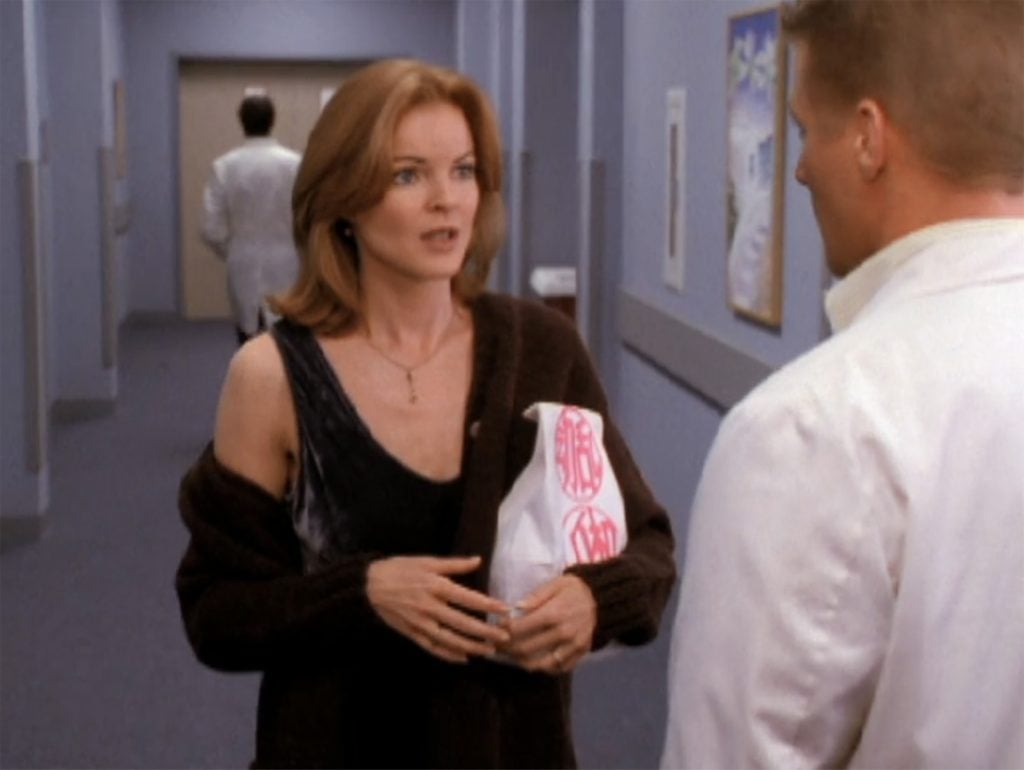Pop Culture
As Seen on ‘Melrose Place’: Mel Chin’s Guerilla Art Project
Conceptual artist Mel Chin was looking the perfect gallery space. He found it on "Melrose Place."

Conceptual artist Mel Chin was looking the perfect gallery space. He found it on "Melrose Place."

Tim Brinkhof

Traveling back and forth between the University of Georgia and the California Institute of the Arts, conceptual artist Mel Chin looked out of his airplane window at the City of Angels below and wondered how his art—any art—could possibly reach the millions of apartments filling the sky with light.
He brought up the question to his colleagues at CalArts, which led them to discuss the intersection between art, pop culture, and Hollywood with much enthusiasm, but little avail. It wasn’t until Chin was back home watching TV with his wife that he found an answer. Flipping through channels, he recalled how he “saw this large blond face filling the screen. It was Ms. Locklear. When she moved, there was a painting behind her, and I said, ‘That’s the gallery.’”
Heather Locklear played Amanda Woodward, one of the characters on Melrose Place, a ’90s soap opera about a group of young adults living in the titular apartment complex in West Hollywood. Debuting in 1992 to 16 million viewers, the sitcom was so popular that Seinfeld, the most popular show at the time, name-dropped it. If Chin was somehow able to feature his art on the show, he would be able to reach the audience he was chasing. More importantly, because Melrose Place frequently tackled important societal issues in its plots, he reckoned its creators wouldn’t be opposed to showcasing art with social and political messages.
A cold call to the offices of showrunner Aaron Spelling sealed the deal: Chin would assemble a group of artists—later dubbed the Gala Committee—to supply the show’s sets with artwork as well as ordinary props.

Still from Melrose Place (1992–99), season five, episode 23. Photo: Screen grab.
As promised, even the most mundane objects carried a hidden, often subversive meaning. A quilt displayed the seemingly abstract chemical structure of the banned abortion pill RU-486. A baby mobile resembled a television remote, and Chinese takeout containers contained references to the Tiananmen Square protests.

Still from Melrose Place (1992–99), season five, episode nine. Photo: Screen grab.
At times, the artwork complemented the themes of the narrative. The bedsheets of a coercive, womanizing character in season four, for example, display a cylindrical motif that, upon closer inspection, are actually images of unrolled condoms.

Still from Melrose Place (1992–99), season four, episode 23. Photo: Screen grab.
At other times, the art commented not on the show itself but on the world beyond people’s TV screens. According to Constance Penley, a media scholar at the University of California, Berkeley, who worked with Chin, the RU-486 quilt was meant as a critique of the entertainment industry’s silence on abortion and women’s rights.
“One of the things we wanted to do was to respond to the fact that in network TV, no matter how strong you are, you cannot have an abortion,” Penley said. “You either have the baby, or you fall down the stairs. We wanted to put reproductive choice back on network TV.”
In 2016, almost 20 years after Melrose Place concluded, more than 100 props delivered by Chen’s team went on display at Red Bull Studios New York in Chelsea as part of an exhibition titled “Total Proof: The Gala Committee 1995-1997.” A permanent gallery, though, lives on in the episodes of Melrose Place themselves.
As Seen On explores the paintings and sculptures that have made it to the big and small screens—from a Bond villain’s heisted canvas to the Sopranos’ taste for Renaissance artworks. More than just set decor, these visual works play pivotal roles in on-screen narratives, when not stealing the show.